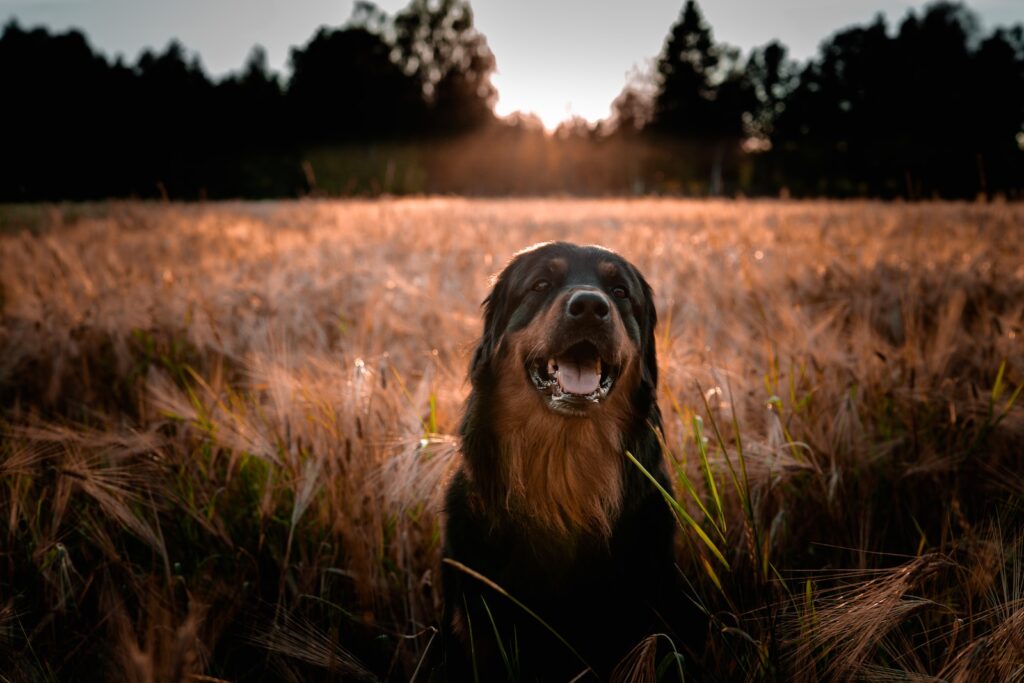Can Dogs Eat Carob? — Yes, They Can
Carob is safe for dogs to consume and can be a healthy treat. However, it is important to feed carob to your dog in moderation and ensure it does not contain any harmful additives or sweeteners.
Can Puppies Eat Carob?
Yes, puppies can eat carob in small amounts. However, it is crucial to introduce new foods gradually and monitor any digestive issues or allergies that may arise.
Things to consider when feeding Carob to puppies?
When feeding carob to puppies, it’s essential to start with a very small amount to assess their tolerance. Keep an eye out for any signs of discomfort, such as diarrhea or vomiting, and consult a veterinarian if necessary.
Nutritional Benefits of Carob for Dogs — Why Carob is Good for Dogs?
No Caffeine
Carob is a great alternative to chocolate because it does not contain caffeine or theobromine, which can be toxic to dogs. It provides a safe option for satisfying their sweet cravings.
Vitamins and Minerals
Carob is a good source of vitamins and minerals, including calcium, magnesium, and potassium. These nutrients promote strong bones and muscles, support heart health, and contribute to overall well-being.
Digestive Aid
Carob contains soluble fiber, which can aid in digestion and regulate bowel movements. It can be especially beneficial for dogs with sensitive stomachs or those prone to constipation.
Low in Fat
Carob is low in fat, making it a suitable treat for dogs on a weight management plan. It can be a guilt-free option to reward your furry friend without adding excessive calories to their diet.
Antioxidant Properties
Carob contains natural antioxidants, such as polyphenols, that help neutralize free radicals in the body. These compounds have potential health benefits, including reducing inflammation and supporting a healthy immune system.
Potential Allergies: Can Dogs Be Allergic to Carob?
While allergies to carob are relatively rare in dogs, it is still possible for some individuals to be sensitive to it. If you notice any signs of an allergic reaction after feeding carob to your dog, such as itching, swelling, or difficulty breathing, consult a veterinarian immediately.
Symptoms of Carob Allergies in Dogs
- Hives: Dogs may develop red, itchy bumps or welts on their skin.
- Itching and Scratching: Dogs may excessively scratch or lick their paws, face, or other body parts.
- Gastrointestinal Upset: Digestive symptoms like vomiting or diarrhea may occur.
What to Do If Your Dog Shows Symptoms?
- Discontinue Feeding Carob: Remove carob from your dog’s diet if you suspect an allergic reaction.
- Consult a Veterinarian: Seek professional advice to determine the cause of the symptoms and receive appropriate treatment.
- Monitor Your Dog: Keep a close eye on your dog’s condition and provide comfort as needed.
Recommended Amount: How Much Carob Can a Dog Consume?
Each dog is unique, so it is essential to consider their size, weight, and overall health when determining the appropriate amount of carob to feed. As a general guideline, limit carob intake to no more than 10% of your dog’s daily calorie requirements to avoid excessive sugar intake.
Things to Consider When Feeding Carob to Dogs
When introducing carob to your dog’s diet, consider the following:
- Avoid Additives and Sweeteners: Choose plain and unsweetened carob products to ensure your dog is not exposed to harmful ingredients like xylitol.
- Monitor for Digestive Issues: Some dogs may be more sensitive to carob, so monitor their digestion and discontinue feeding if any problems occur.
- Training and Moderation: Use carob as an occasional treat during training sessions or as a reward for good behavior, not as a substitute for a balanced diet.
How to Feed Carob to Dogs: A Quick Guide
Feeding carob to your dog can be a delightful experience for both of you. Here are three simple recipes to try:
Carob-Coated Banana Bites
1. Slice a ripe banana into bite-sized pieces.
2. Melt unsweetened carob chips in a microwave-safe bowl.
3. Dip each banana piece into the melted carob to coat.
4. Place the coated banana bites on a parchment-lined tray and let them cool until the carob hardens.
Carob and Peanut Butter Balls
1. In a mixing bowl, combine unsweetened carob powder, natural peanut butter, and rolled oats.
2. Roll the mixture into small balls using your hands.
3. Place the balls on a tray and refrigerate until firm.
Carob Yogurt Frozen Treats
1. Mix plain yogurt and unsweetened carob powder in a bowl.
2. Spoon the mixture into ice cube trays or silicone molds.
3. Freeze until solid, then serve as a refreshing treat for your pup.
Conclusion
Carob can be a safe and enjoyable addition to your dog’s diet when introduced in moderation. It provides nutritional benefits, including essential vitamins and minerals, and can be a valuable training aid. However, always prioritize your dog’s well-being and consult a veterinarian if you have any concerns or notice any adverse reactions. Remember, a healthy diet should consist primarily of nutritionally balanced dog food.






